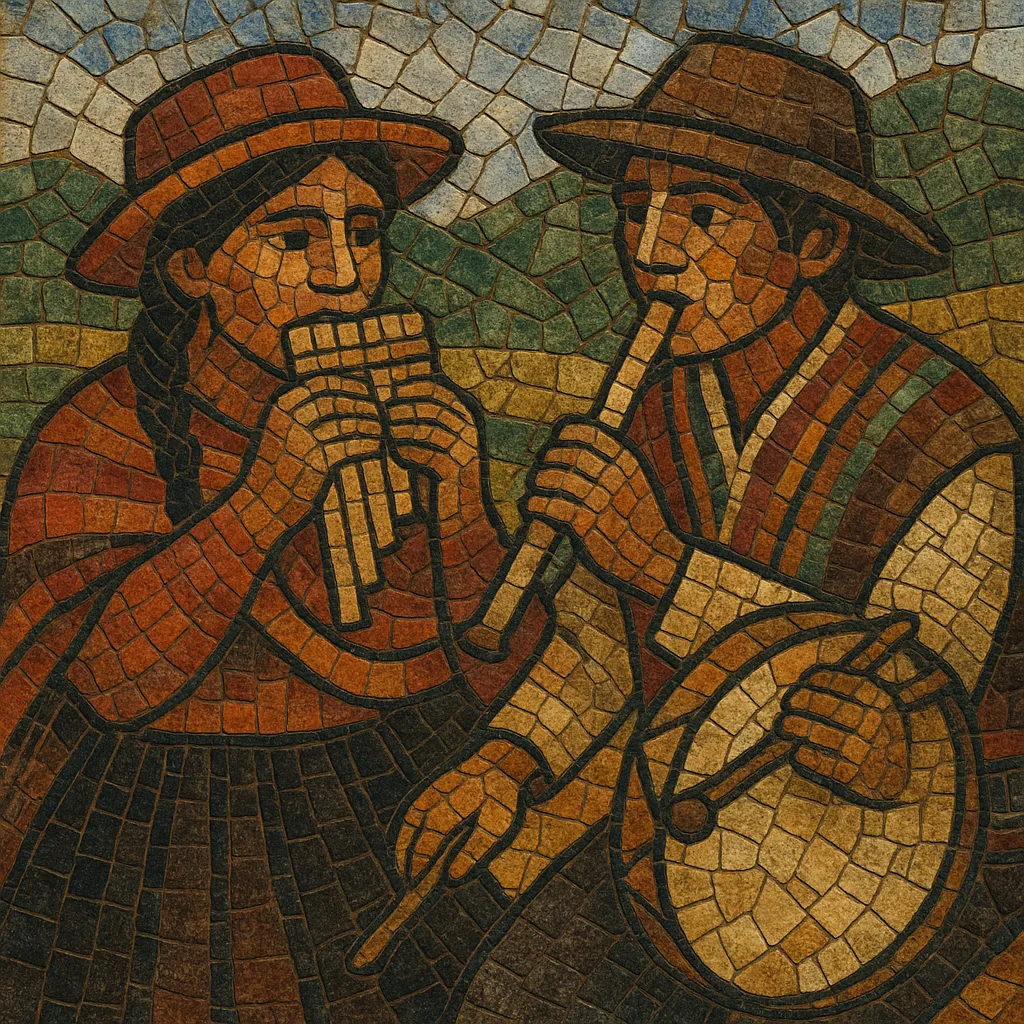Chimayche (often spelled chimaycha) is a rural Andean song-and-dance practice associated with Quechua-speaking youth from the Ayacucho highlands of Peru. It is traditionally performed during the rainy season and early harvest months, when pastoral and agricultural cycles encourage communal festivities and courtship. The style is marked by high, penetrating vocal timbres sung in unison or simple call-and-response, pentatonic melodies, and buoyant duple-meter rhythms that invite circle- or line-dance formations.
Instrumentation centers on small Andean aerophones—particularly local panpipes (antara/antara ayacuchana) and duct flutes (pinkillu/pinkuyllu)—often supported by a small hand drum (tinya). In some communities, charango or guitar may be added for reinforcement, but the core sound remains wind-led and voice-forward. Lyrics, predominantly in Quechua, celebrate nature, seasonal change, flirtation, and playful rivalry between youth cohorts from neighboring hamlets.
Chimayche grew out of long-standing Quechua rural singing and dancing traditions in the Ayacucho region. Its musical vocabulary—pentatonic scales, high-register group singing, and aerophone-led textures—reflects deep Andean aesthetics that predate colonial times. As a seasonal youth practice, it was closely tied to the agricultural calendar and local notions of courtship and communal identity.
During the 1800s and early 1900s, chimayche consolidated as a recognizable repertoire within Ayacucho’s broader huayno and harawi ecosystems. Village ensembles standardized instrument sets (antara, pinkillu, tinya) and dance formations, while songs circulated orally across districts such as Vinchos, Chuschi, Sarhua, and Quispillacta. Despite limited documentation, regional fiestas and patron-saint festivals served as key sites of transmission.
Following periods of social upheaval in Ayacucho, cultural organizations and local radios began to document and present community ensembles, bringing chimayche to urban audiences in Huamanga (Ayacucho City) and beyond. Field recordings and folkloric festivals helped distinguish chimayche from other huayno variants, highlighting its youth-centered performance practice and distinct vocal timbre.
Today, chimayche remains primarily community-based and seasonal, but it also appears on regional stages and cultural showcases. Some contemporary Andean fusion projects draw on its pentatonic melodies, collective singing, and panpipe textures, recontextualizing them in studio productions while community ensembles keep the participatory, outdoor character alive.


